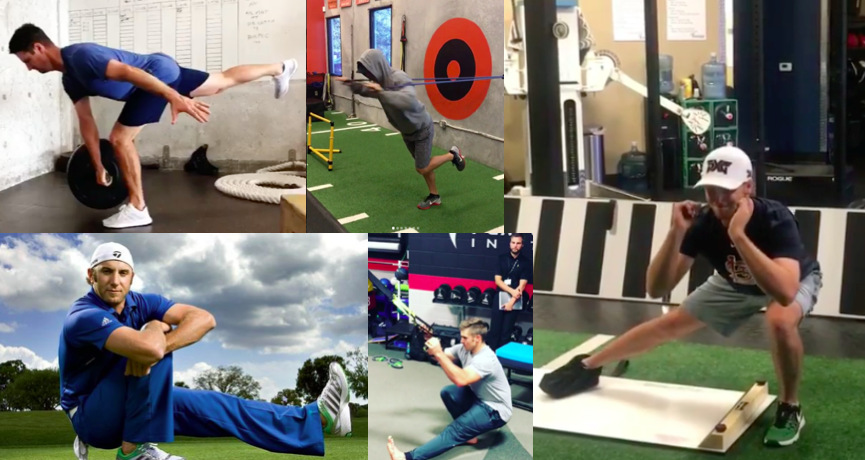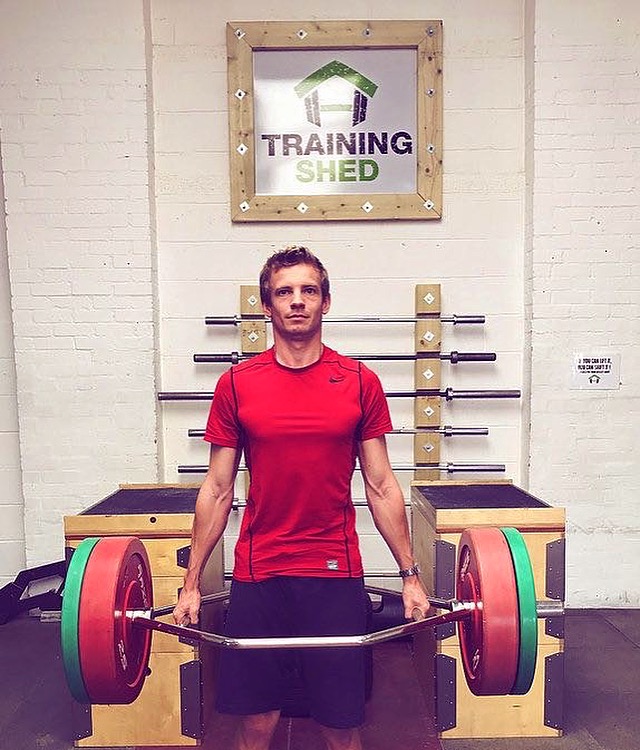The Benefits of Single Leg Training for Golfers

There can be no doubt that a strong lower body is vital for golfers both in relation to swing mechanics and speed but also from an injury prevention standpoint. Various studies have shown that increased lower body strength and power have strong correlations to higher swing speed levels and improved performance. However, when most people think of lower body strength exercises they tend to just think of the traditional bilateral squat and deadlift. As a strength and conditioning coach, I know the importance of these traditional lower body strength building exercises and use them and variations of them regularly with my clients. However, I also love incorporating single leg exercises alongside them and feel they are a very underutilized tool. Below I outline 5 reasons why I believe single leg work should be a part of your lower body strength building programme.
1 Increased Weight With Minimal Spinal Load
Single leg training allows you to overload but with a reduced total weight. As only one leg at a time is doing the work the weight being used is obviously much lower. This can be particularly helpful with certain types of clients such as seniors, beginners and people with mobility restrictions/injuries (these can be identified during the initial screen with assessments such as the overhead deep squat test). Take the squat pattern for example. A client may feel more comfortable performing a split squat or lunge holding dumbbells in each hand as opposed to a traditional back/ front squat (the exercise can still be loaded quite heavily as illustrated by Rory Mcilroy). It may also be a safer alternative than loading the spine as in a back squat and doesn’t require the shoulder mobility that a front squat needs. There is also something called the bilateral difference in that we are actually stronger on single leg exercises than their bilateral counterparts. Therefore, in terms of strength gains single leg exercises are very justified in a workout programme. The split squat is actually the strength test TPI use for the lower body during an assessment as it allows us to see any asymmetries between sides and if a golfer has sufficient lower body strength in the vertical plane (150% of bodyweight for 8 reps is considered good lower body strength).
2 Improving Lateral Stability
Another advantage is that single leg exercises are possibly more applicable to the swing itself. As a golf fitness professional, my aim is to get a golfer more mobile and stronger with the aim of them playing better golf. Although the golf swing itself is not performed on a single leg there is actually a big carry over to the swing from single leg exercises. In the swing, each leg is working individually and at different parts of the swing is certainly more responsible for taking the load. During the swing, the majority of load goes into the rear leg in the backswing and is then transferred into the lead leg in the downswing. It would therefore seem to make sense to train each leg individually as well as together. An awesome way to do this is using lateral lunges on a sideboard or using sliding discs as shown by ex-Oregon star and incoming Web.com rookie Wyndham Clark. The weight shift into the standing hip joint will be a similar pattern to the loaded hip joint at the top of the backswing on the rear leg and the lead hip joint in transitioning into the downswing and help achieve a proper load in the swing without swaying and sliding.
3 Building Unilateral Strength
Single leg training also helps reduce strength imbalances between legs. Most clients tend to be stronger on one leg than the other (as identified by the TPI split squat test) and if you are only doing bilateral exercises the dominant side is going to keep picking up a bit more of the slack and the strength imbalance will grow. By adding in some single leg exercises you can help balance this out (you may need to do more reps/sets on the weaker side to begin with). This will not only help in the gym (single leg work will actually help traditional bilateral exercises greatly by addressing the weaker side) but also in the swing itself, as I alluded to in the 2nd advantage. In fact, lead leg strength may actually be more important for a golfer as it is responsible for creating force in the downswing yet from my testing experience is often the weaker leg. For a right handed golfer, this means the left leg is being loaded and extended in the downswing yet most right handed golfers would be stronger in their right leg and vice versa for a left handed player. A great way to strengthen your weaker side is a single leg deadlift as shown by Justin Rose. This will really target your posterior chain (hamstring, glutes and lower back) and create a strong and powerful extension pattern in your lead leg that will really benefit your swing.
4 Improving Balance
A further benefit is the positive effect of single leg work on balance. According to TPI figures, over 60% of amateur golfers can’t balance for more than 10 seconds on one leg in the TPI balance assessment and this can cause various compensations in the swing itself. I have seen great improvements in balance by incorporating single leg work with my golfers due to the increased levels of proprioception these exercises require as well as building strength and stability. This is highlighted in the video on the right of Justin Thomas where he is performing an upper body push move but in a single leg stance that will help improve not only upper body push strength but also single leg strength, hip stability, core stability and balance.
5 Training In Multiple Planes
A final advantage to single leg exercises are that they easier to utilize in multiple planes of movement. Golf is a sport that is played in all 3 planes of movement (sagital, frontal and transverse) yet the majority of lower body exercises fall in the sagittal plane (straight up and down). Single leg exercises allow us to start going side to side, adding in rotation and combining multiple planes of movement at a time. This again links in to the point earlier about single leg exercises maybe being more applicable to golf! This is brilliantly demonstrated by Lexi Thompson’s single leg training. These exercises are combining multiple planes and movements and are all excellent for hip stability which can help in the swing to reduce movements such as sliding and swaying.
These are just some of the biggest benefits of single leg training for golfers in my opinion but the benefits of them extend far beyond just these points alone. As you can see by the videos above, the best players in the world all understand the benefits of these exercises and are incorporating them into their programmes. My advice would be to find yourself a certified TPI fitness professional who will be able to assess and then guide you through the appropriate lower body exercises in a safe and effective manner and help you improve your golf by taking advantage of both bilateral and single leg exercises!

